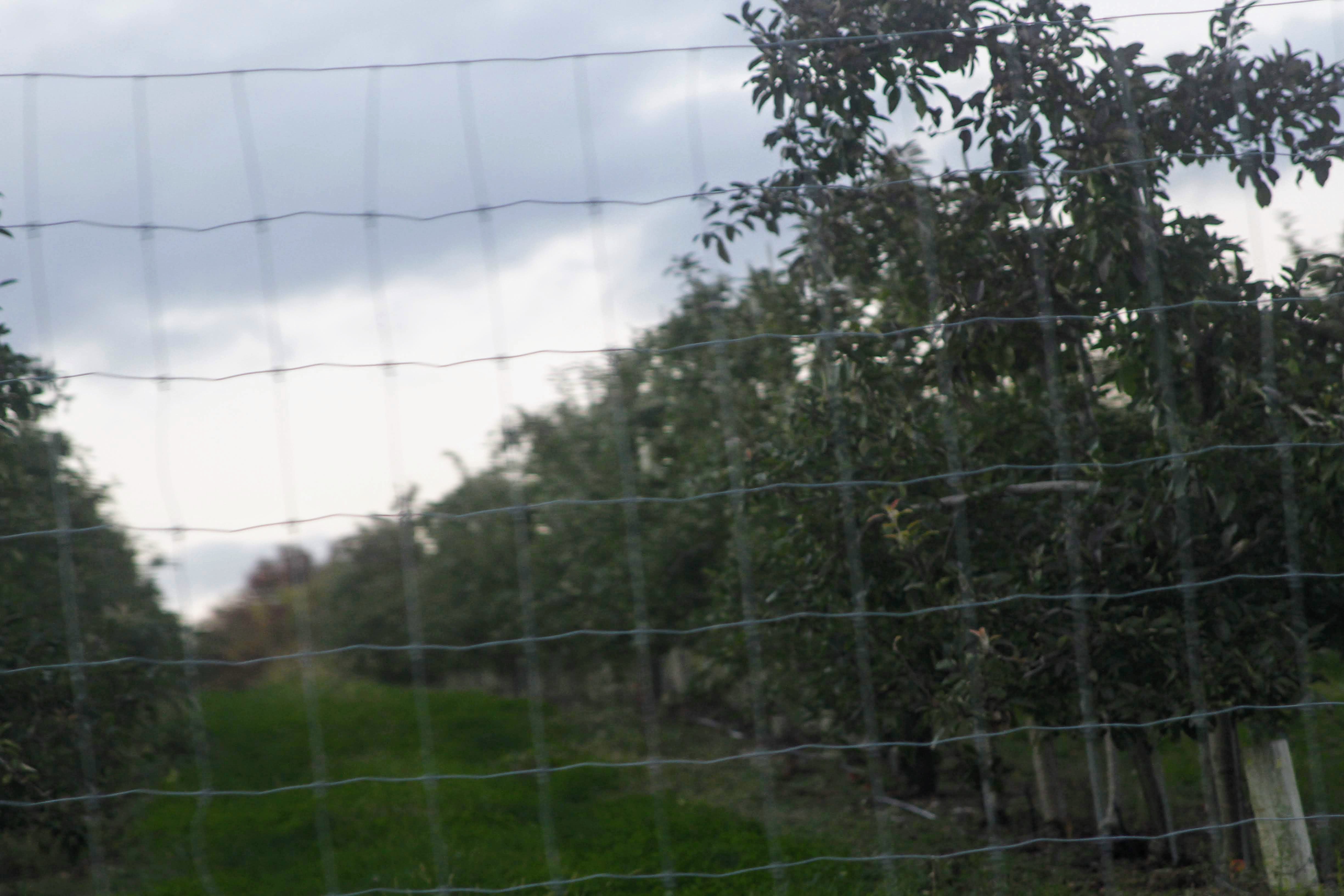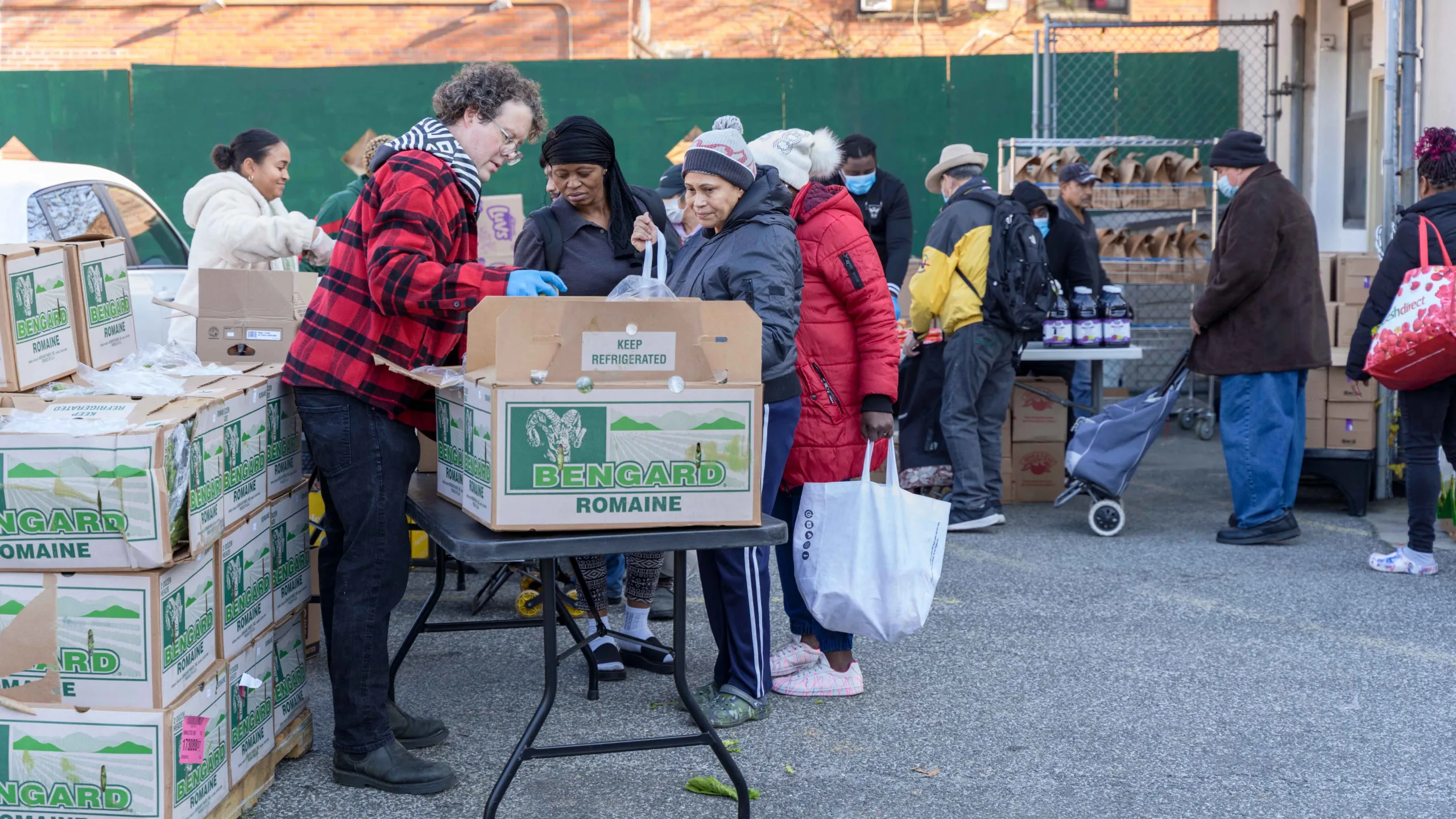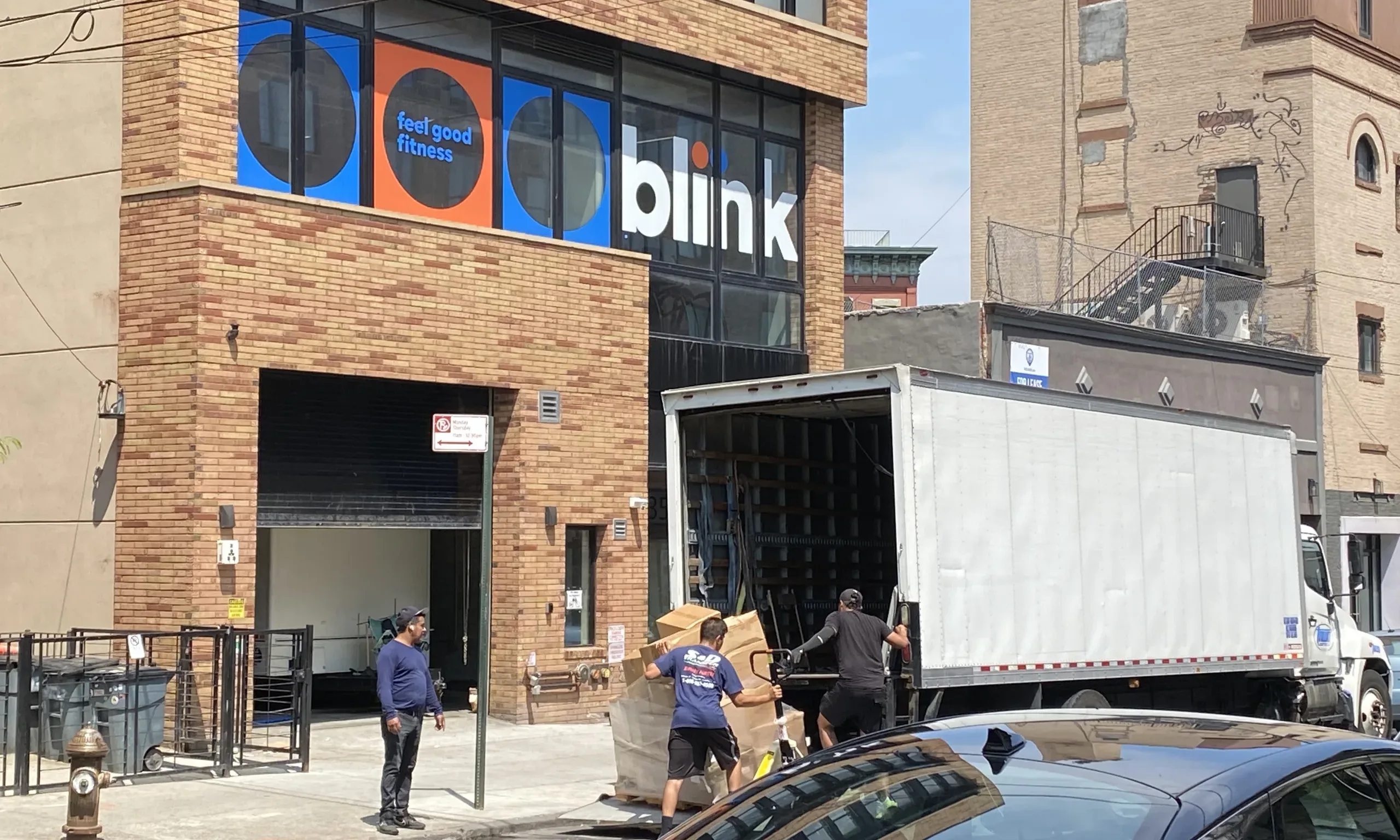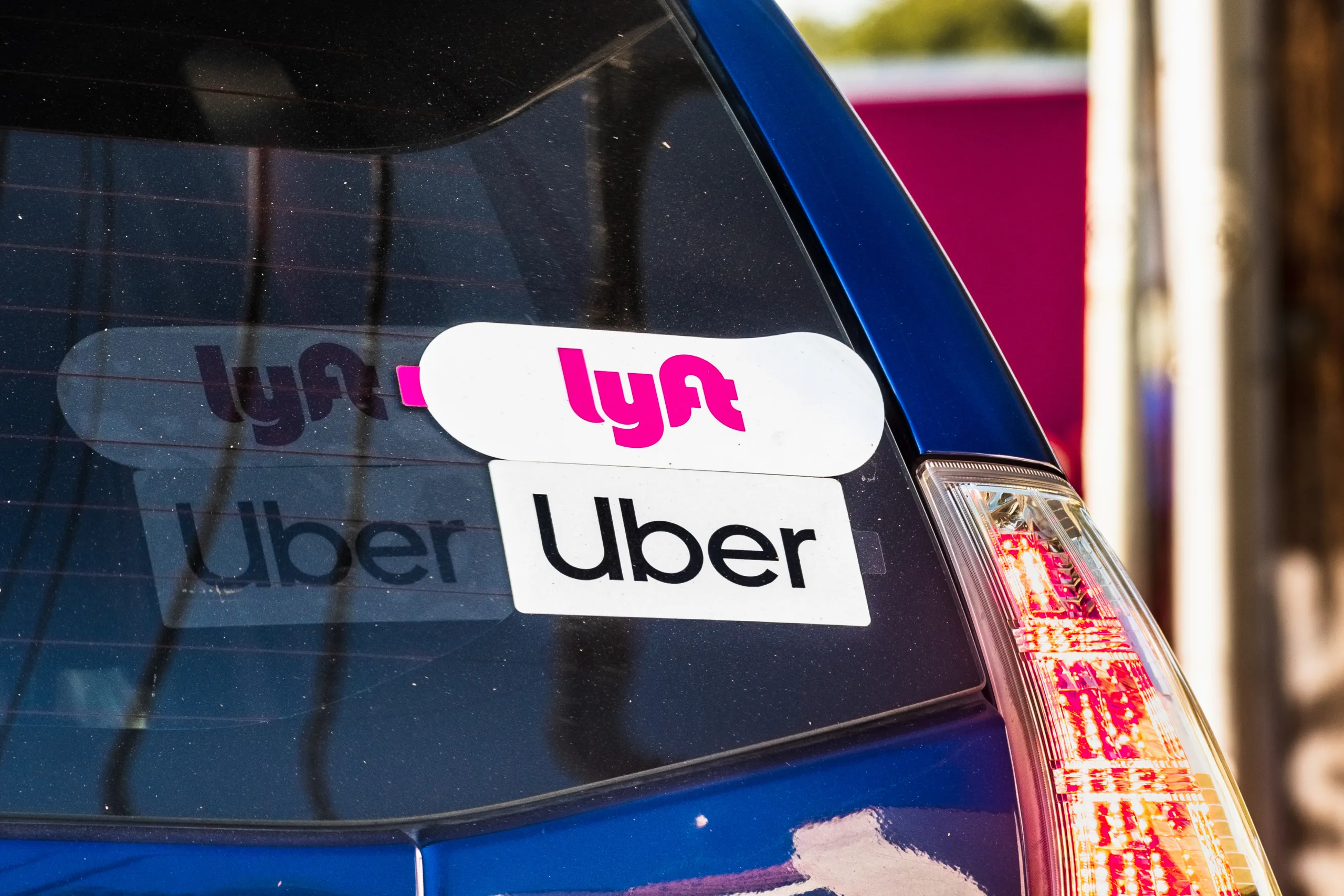It is Sunday, so the men have extra time to prepare a hearty stew in the kitchenette opposite to a small shrine to the Mexican Virgin of Guadalupe.
Outside, enormous warehouses line this sparse lot in Orange County, New York. Each holds thousands and thousands of onions, filling multiple cavernous spaces. The vegetables have been picked, cut, and packaged by an assortment of laborers like the ones chopping carrots in the wood-paneled little house next door.
These stoic men with rough hands appear as one homogenous group, working together side-by-side in the fields. But among the group, there is one consequential distinction that colors their relations with one another, with their bosses, and with the United States government: Some are undocumented and others are legal, working in the fields on temporary H-2A work visas.
Most employment-based visas have become harder to obtain in recent years, a trend accelerated by President Trump, including through his April 2017 “Buy American, Hire American” executive order. That particular order targeted the popular H-1B visa sought for international professionals hired by American companies, cutting eligibility and making the application process more time-consuming, expensive, and unpredictable. Other visas, such as the O-type ‘artist’ visa, have also become harder to get. H-2B temporary visas, which the president’s businesses have been known to use, quickly hit their cap in each of the past two years and received temporary, modest increases from the Department of Homeland Security.
But the H-2A visa, used exclusively for temporary agriculture work, has bucked the overall trend. With no cap on the number of such visas available, many more such visas have been issued under the Trump administration than ever before. According to data at the U.S. Department of Labor, the number of H-2A positions certified per fiscal year went from 98,821 in 2010 to 242,762 in the 2018 fiscal year, an increase of about 146 percent. The growth was reflected in New York, which has consistently been in the top ten states receiving H-2A workers. New York had 7,634 positions certified in fiscal 2018, up from 3,842 in 2010. Currently, it represents 3.1 percent of all H-2As issued around the country.
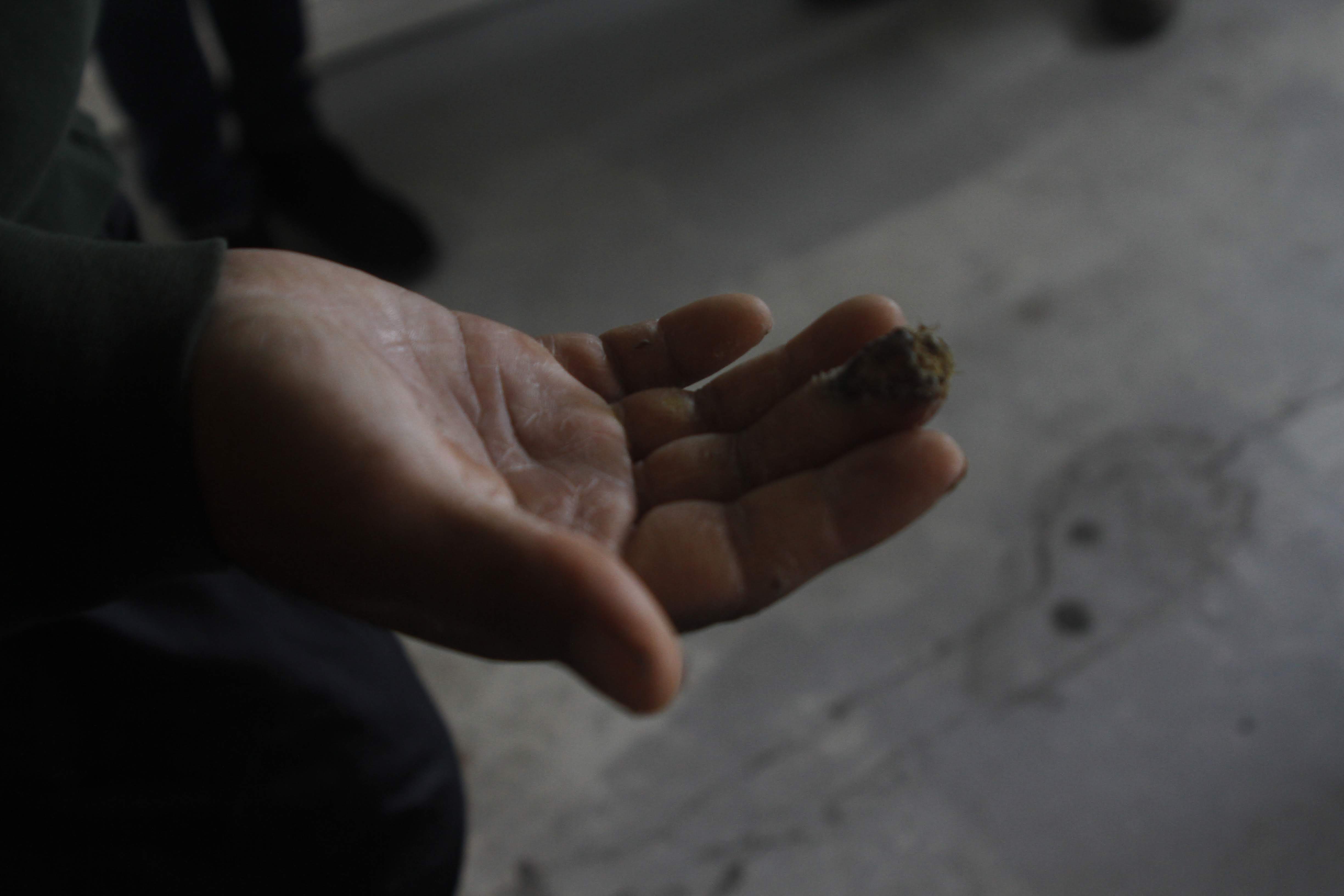
A Shifting Workforce
When most people think of farming in America—particularly that which employs undocumented migrant labor—they usually think of the fertile, sunny lands in Florida or California. Yet New York state has over 35,000 farms, which generated $4.8 billion in revenue in 2017, according to a report from the State Comptroller’s office. Scattered throughout the state, these farms have an array of specializations, the biggest of which is dairy production. Cows need to be tended year-round, so dairy farms typically don’t require injections of seasonal labor, as opposed to fruit and vegetable farms that rely on the short-term, backbreaking work that farmers cannot find locals to do.
In years past, this workforce was largely made up of undocumented laborers who would move around the country, spending perhaps eight months in Florida and four in New York, or stay put on the farms they worked in. That workforce has gradually given way to younger seasonal workers hired on short-term work contracts who travel back and forth between the United States and their hometowns in Mexico and Central America. Worker advocates maintain that the shortage of farmworkers during growing season once gave the undocumented more leverage to demand better work conditions. The rise in H-2A workers has slowly pushed out the undocumented, creating a more dependent, contractual employer/employee relationship.
“The H-2A worker is tied to their employer,” said Cristian Ávila, of the Workers Justice Center of New York, which provides legal assistance and outreach for workers in the Hudson Valley and Upstate New York.
Employers who want to hire H-2A workers must receive a certification from the U.S. Department of Labor confirming that they there are not enough U.S. workers available for the seasonal work, and that employing H-2A workers will not hurt wages and working conditions in the United States. The employer then formally requests workers, and workers outside the country can apply for visas. The workers’ status in the country is entirely dependent on the employer. Due to the seasonal nature of the work, H-2A workers generally aren’t around long enough to effectively push any workplace claims. Many rely on being invited back to work at the same farms year over year.
At the Hudson Valley onion farm, in a fertile farm region known as the Black Dirt Region after its distinctive dark soil, an H-2A worker, Roberto*, had cut off part of his finger while using a machine. He had been taken to the hospital for emergency surgery and given three paid weeks off after his accident, an arrangement he said was satisfactory and remuneration enough for the partial loss of his digit. Once the three weeks were up, he went back to work one-handed, keeping his right hand and what was left of his yellowed, iodine-stained finger safely tucked against his chest. Asked, if he would return next year, the worker looked puzzled. “If they’d have me back, of course,” he said.
Like many others at the farm, Roberto was from the same Mexican town as the ‘mayordomo,’ a colonial-era term that in this case translates roughly to ‘foreman,’ or the supervisor on the field. The foreman had recruited the men he knew from the town, and let them know they could expect work in the United States at the federally-mandated H-2A minimum wage — $12.83 per hour in New York this year, much higher than they could expect to earn in Mexico — as long as they stayed on his good side.
Ávila of Workers Justice said that his group had tried to convince the hurt worker to bring a claim seeking compensation for his injury, but it had gone nowhere, partly out of a fear of alienating the boss and partly out of a general skepticism of the government’s ability to help. “The OSHA materials are like ‘you should report [issues] to the Department of Labor and the federal government,’ and then on the news it’s like ‘the federal government rolls out a new measure to terrorize immigrants,’” he said.
Farmers have turned to the H-2A program not only because the Trump administration has cracked down on undocumented workers, but also because it has given them a more stable workforce.
In the sparse dorm house where several workers live, a young, undocumented worker who handles packaging and some administrative tasks explained that the bosses liked the certainty of having specific numbers of workers arriving at specific times, already having been hired and onboarded. With undocumented workers “five will say they’re on the way, but if they don’t come, then what?” he said. Traveling between states has gotten more difficult with Customs and Border Protection agents stepping up checkpoints and boarding buses.
Steve Ammerman, a spokesman for the New York Farm Bureau, which provides support and advocacy for New York farmers, said in a phone interview that “there’s a shortage of labor and the H-2A program, as cumbersome as it can be at times, is an avenue to get a legal workforce and get workers who want to come to this country to do the job.”
“They are skilled laborers and the farmers can count on them to be here… one farmer told me that it was a decision that allowed him to sleep at night, because he was concerned that some of these migrant workers potentially could be undocumented. We’ve seen an increase in enforcement actions going on through ICE, and he was worried about losing some of his work force when he may have needed it most, during harvest time.”
Ammerman said that most of the farmers he spoke to would rather stick with longtime, skilled workers with whom they they had extensive personal and professional relationships, but the combination of an aging workforce, inflexible immigration policy, and an increasing difficulty to find enough local labor made the temporary visa program attractive.
“It’s getting more difficult every year for farms to fill their labor needs, and because of that we will probably continue to see more farmers turning to H-2A,” Ammerman said. “We need to really look at our overall immigration policy in this country and recognize the migrant workers who are already here in this country, who are doing a great job, but may be undocumented, and we need to find some avenue to open up opportunities for those workers as well.”
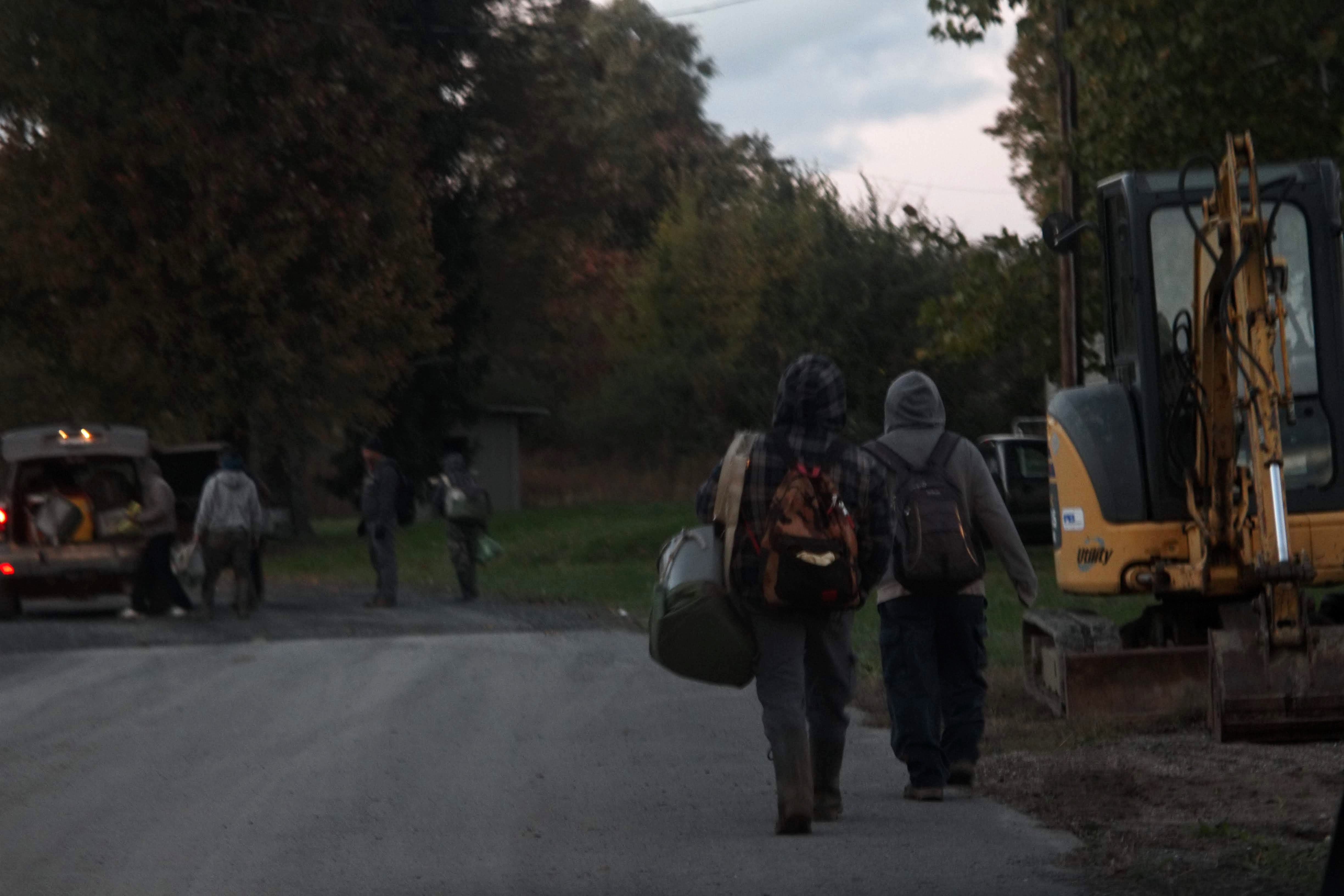
Last Men Standing
As the H-2A worker population has ballooned, the existing labor force of older, undocumented workers, many of them decades-long veterans of their farms, are feeling edged out. The shift has led to tensions between the groups, and between the longtime workers and their employers. A few workers who used to travel between New York and Florida seasonally told Documented that work had been getting harder to find down south as the H-2A program became more popular, to the point where it was difficult to get a job at all.
Jaime*, who is in his fifties, entered the United States illegally at the end of 1999 and went to work at the orange groves in Florida, spending the next ten years splitting his time between his work there and the onion farm in New York. He stopped going in 2010, he said, because “the change that the government made, bringing people with permits. In Florida, all the farms filled up with people with permits. No one hires people like us anymore.”
At an apple orchard in neighboring Ulster County, New York, that still uses mostly undocumented labor, workers returned after dusk in the biting October chill from a lengthy day picking apples that would in short order appear in Manhattan grocery stores. As the men cooked and warmed up in their sparse trailers, Miguel* explained that he preferred working in New York, because of the better pay and free housing in the trailer. Nonetheless, the changing of the seasons dictated that he would soon be heading out, along with the rest of the group, to parts south.
When once he would have gone to Florida, he had now found employment in Alabama, he said, because there was no longer any money in Florida. In part, he blamed changing climate conditions, as heat waves and frosts would kill the crops on which worker pay relied, but he also knew that temporary workers were taking up the jobs that used to go to undocumented workers like him. “If one or two people arrive, alone, asking ‘can I have a job?’ they won’t take you anymore, because it’s just two people, or you alone, and they want a group of sixty, eighty, fifty, already hired,” he said. He had kept in touch with the Florida farm he worked at and understood it was bringing in a hundred H-2A workers for the season, as opposed to only eight or ten local workers.
Many of the undocumented see Florida as a cautionary tale, a harbinger of trends that will materialize in New York soon enough. Men at or near retirement age who have worked grueling, near-minimum wage jobs for years in informal arrangements that haven’t let them pay into pension plans or social security are either resigned to squeezing out the last sweet drops of productive living or already bitterly contemplating planned obsolescence. Some have set their sights on home.
“Us, we’re headed to Mexico, and leaving this all behind,” said Jorge* an undocumented worker in his forties who said he’d been working at the farm since 1996. “As the foreman and the boss say, ‘we want youth’… We’re not animals. We get tired. We’ve wished we would get a [work permit] or something, but no, there’s nothing. So what are we waiting around for? There’s no hope.”
Many of the undocumented workers emphasize that they’re not resentful towards the coworkers they call ‘visados,’ or visa-holders. “If the visado wants to get ahead in life, go ahead comrade, give it your best. Whatever you don’t know, ask me and I’ll help, that’s how it should be,” said Jaime. Yet they feel like they’re being carelessly sidelined after entire careers in the fields, becoming second-class laborers to the visados. “They’re scolded, mistreated, humiliated. Better to leave. There’s a lot of people that had spent a lot of time here, and now they’re starting to go,” said Martín*, his colleague. The owner of the farm did not respond to requests for comment.
According to several farmworkers and advocates, undocumented workers typically get paid around $10.40 an hour, the current New York State minimum wage for areas outside of New York City, Long Island, and Westchester. The arriving H-2A workers must receive the federally required higher, as well as specifically delineated benefits. Multiple farmworkers at the Orange County onion farm complained that their H-2A colleagues’ familiarity with the foreman, whom they knew from their hometown in Mexico, allowed them more flexibility with their work and more rewards for a job well done.

Role of the State
For some undocumented workers, frustrations extend to the local government, which they believe has pulled back from providing support even as the federal government has declared open season. Several old-timers referenced New York Department of Labor representatives who they used to see at the Alamo, a clinic at the Farmworkers Community Center in Goshen, New York. They had stories about disputes quickly resolved by the intervention of the DOL, in what they described as a sadly bygone era.
“Sometimes we’re afraid, and we don’t say things in front of the boss or the foreman or whoever. We’re afraid that they’ll do something, take your job away. And you say to yourself, ‘well, I have the support of the state,’ but that’s just a figure of speech. How many times do they come visit us, see how we’re doing, see what’s going on and what injustices are happening in the field?” said Jaime. “They used to come by every eight or so days to keep an eye on us, see how they’re behaving, see how the boss is treating them,” Martín chimed in.
In response to questions about whether the state DOL had changed any of its policies or practices with regards to servicing agricultural workers in the Hudson Valley region, Jill Aurora, its communications director, wrote that “DOL has Agriculture Labor Specialists that conduct general labor and employment outreach to farm workers throughout the state. The NYSDOL works with the USDOL to ensure that state and federal resources are used effectively to assist as many farmworkers as possible throughout the harvest season,” and that materials describing how to file complaints or discuss workplace violations with the DOL are distributed.
As for the general trend towards H-2A usage, Aurora wrote that “Increased use of the H-2A program requires that employers agree to additional government inspections, visits from outreach workers and audits from the USDOL… When employers comply with H-2A requirements, housing, wages and working conditions for all workers are improved.” She emphasized that DOL personnel did not inquire about immigration status during any labor investigation, and “all workers employed in the same jobs as the foreign H-2A workers are considered domestic workers by the NYS Department of Labor.”
Internal documents used by a farm to apply for H-2A certification and request H-2A workers to the federal DOL that were viewed by Documented do lay out a bevy of obligations that the employer agrees to with regards to the foreign workers, including paying the mandated wage, providing unemployment insurance and workers’ compensation, providing housing and materials for preparing meals, and reimbursing them for travel costs. Yet the rules appear flexible: the proposed workweek for H-2A workers is 40 hours, well under what some workers said they put in.
Harvests to Come
According to Ávila of Workers Justice and the Farm Bureau’s Ammerman, the specter of federal immigration enforcement action remains a more abstract threat to Hudson Valley workers than it is for counterparts in the northern and western parts of the state. I-9 audits, the mechanism by which Immigration and Customs Enforcement (ICE) demands worker information from employers suspected of hiring undocumented immigrants, remain relatively rare in the area.
Ammerman said the Farm Bureau didn’t keep close track of the audits, but that while he knew they had taken place under the Obama administration, “the enforcement actions have seemed to increased under the current administration. Particularly in the North Country and Western New York is probably where we’ve seen more activity. It’s closer to the border than the Hudson Valley, but that doesn’t mean it’s not happening in Hudson Valley.”
TestPost3
The H-2A program’s relative immunity to the broader foreign worker crackdown is not set in stone. Last week, the federal DOL published a proposed rule titled “Modernizing Recruitment Requirements for the Temporary Employment of H-2A Foreign Workers in the United States” to the Federal Register. The proposal is relatively modest, mostly stipulating that employers must post work advertisements online and try a little harder to find locals before turning to foreign workers.
These conditions could mean that there will be a space and a need for undocumented workers in the Hudson Valley for some time to come. The going is tough — as Documented has previously reported, farmworkers in New York are barred by law from unionizing and collective bargaining — but the undocumented workers who aren’t leaving are determined to look out for one another.
At another one of the trailers near the Ulster apple orchard, a gruff but friendly undocumented worker watched television as he spoke to a reporter. “The boss is the boss, he doesn’t try to become friends with everyone, because there’s too many of us, but the idea is he lets us do our job well,” he said. He’d been at the orchard for six seasons, and the owners had assured him he’d be welcome back again. For now, he was headed to Texas for a few months of cutting lumber. Come harvest time again, he expected to be back here with his comrades, toiling away among the fruit.
Editors Note: Many of the workers in this story asked that their names be changed due to fear of reprisal.
